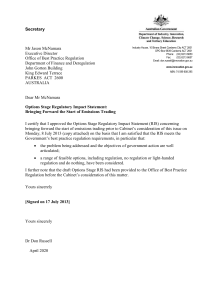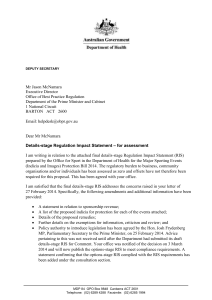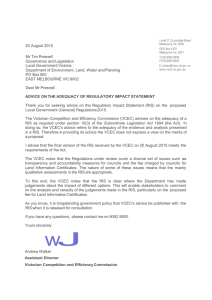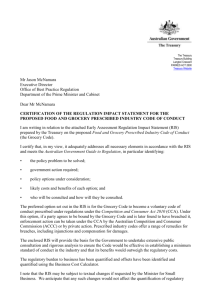EFFECTS OF BISPHOSPHONATE TREATMENT AND REMOBILIZATION ON THE TISSUE-LEVEL
advertisement
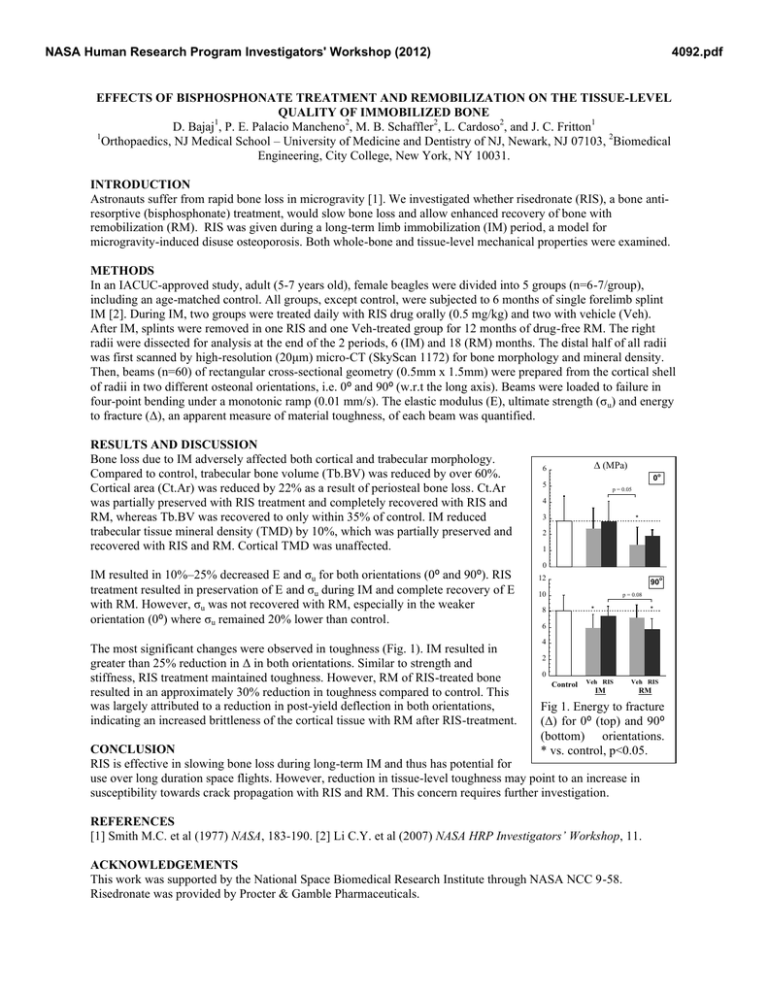
NASA Human Research Program Investigators' Workshop (2012) 4092.pdf EFFECTS OF BISPHOSPHONATE TREATMENT AND REMOBILIZATION ON THE TISSUE-LEVEL QUALITY OF IMMOBILIZED BONE D. Bajaj1, P. E. Palacio Mancheno2, M. B. Schaffler2, L. Cardoso2, and J. C. Fritton1 1 Orthopaedics, NJ Medical School – University of Medicine and Dentistry of NJ, Newark, NJ 07103, 2Biomedical Engineering, City College, New York, NY 10031. INTRODUCTION Astronauts suffer from rapid bone loss in microgravity [1]. We investigated whether risedronate (RIS), a bone antiresorptive (bisphosphonate) treatment, would slow bone loss and allow enhanced recovery of bone with remobilization (RM). RIS was given during a long-term limb immobilization (IM) period, a model for microgravity-induced disuse osteoporosis. Both whole-bone and tissue-level mechanical properties were examined. METHODS In an IACUC-approved study, adult (5-7 years old), female beagles were divided into 5 groups (n=6-7/group), including an age-matched control. All groups, except control, were subjected to 6 months of single forelimb splint IM [2]. During IM, two groups were treated daily with RIS drug orally (0.5 mg/kg) and two with vehicle (Veh). After IM, splints were removed in one RIS and one Veh-treated group for 12 months of drug-free RM. The right radii were dissected for analysis at the end of the 2 periods, 6 (IM) and 18 (RM) months. The distal half of all radii was first scanned by high-resolution (20μm) micro-CT (SkyScan 1172) for bone morphology and mineral density. Then, beams (n=60) of rectangular cross-sectional geometry (0.5mm x 1.5mm) were prepared from the cortical shell of radii in two different osteonal orientations, i.e. 0⁰ and 90⁰ (w.r.t the long axis). Beams were loaded to failure in four-point bending under a monotonic ramp (0.01 mm/s). The elastic modulus (E), ultimate strength (σ u) and energy to fracture (Δ), an apparent measure of material toughness, of each beam was quantified. RESULTS AND DISCUSSION Bone loss due to IM adversely affected both cortical and trabecular morphology. Compared to control, trabecular bone volume (Tb.BV) was reduced by over 60%. Cortical area (Ct.Ar) was reduced by 22% as a result of periosteal bone loss. Ct.Ar was partially preserved with RIS treatment and completely recovered with RIS and RM, whereas Tb.BV was recovered to only within 35% of control. IM reduced trabecular tissue mineral density (TMD) by 10%, which was partially preserved and recovered with RIS and RM. Cortical TMD was unaffected. IM resulted in 10%–25% decreased E and σu for both orientations (0⁰ and 90⁰). RIS treatment resulted in preservation of E and σu during IM and complete recovery of E with RM. However, σu was not recovered with RM, especially in the weaker orientation (0⁰) where σu remained 20% lower than control. The most significant changes were observed in toughness (Fig. 1). IM resulted in greater than 25% reduction in Δ in both orientations. Similar to strength and stiffness, RIS treatment maintained toughness. However, RM of RIS-treated bone resulted in an approximately 30% reduction in toughness compared to control. This was largely attributed to a reduction in post-yield deflection in both orientations, indicating an increased brittleness of the cortical tissue with RM after RIS-treatment. (MPa) 6 o 0 5 p = 0.05 4 3 * 2 1 0 12 o 90 10 p = 0.08 * 8 * 6 4 2 0 Control Veh RIS Veh RIS IM RM Fig 1. Energy to fracture (Δ) for 0⁰ (top) and 90⁰ (bottom) orientations. * vs. control, p<0.05. CONCLUSION RIS is effective in slowing bone loss during long-term IM and thus has potential for use over long duration space flights. However, reduction in tissue-level toughness may point to an increase in susceptibility towards crack propagation with RIS and RM. This concern requires further investigation. REFERENCES [1] Smith M.C. et al (1977) NASA, 183-190. [2] Li C.Y. et al (2007) NASA HRP Investigators’ Workshop, 11. ACKNOWLEDGEMENTS This work was supported by the National Space Biomedical Research Institute through NASA NCC 9-58. Risedronate was provided by Procter & Gamble Pharmaceuticals.
